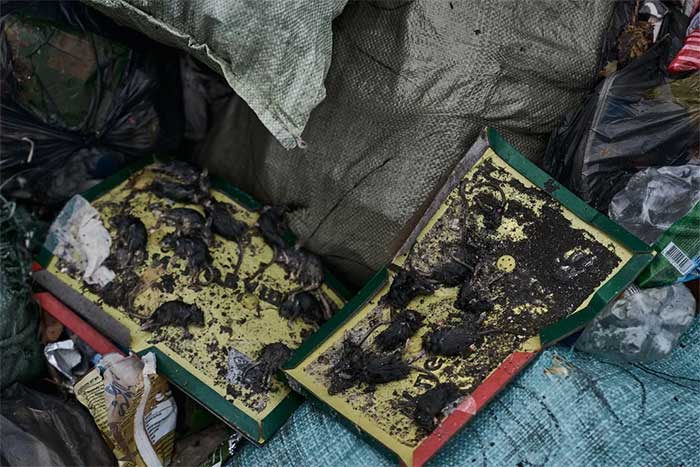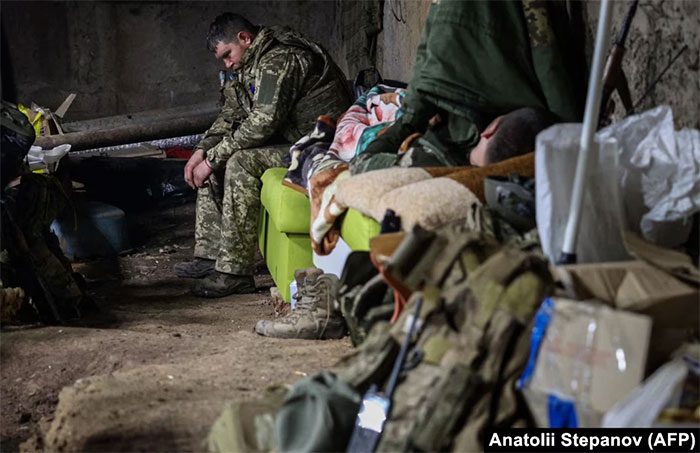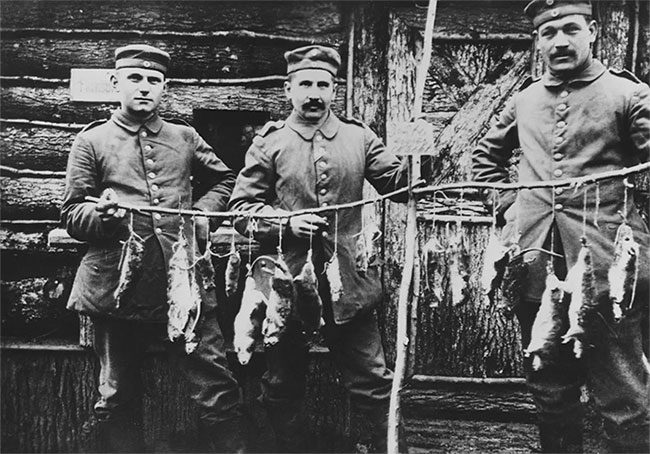A horde of filthy rats, carrying dangerous pathogens, has infested military bases, trenches, and bunkers along the front lines of the Russia-Ukraine conflict, leaving behind haunting fears and becoming a common enemy for soldiers from both nations.
4 Soldiers Against 1,000 Rats
Nausea, bleeding eyes, intense pain… are symptoms of infectious diseases caused by the rat infestation across military trenches at the hotspots of the Russia-Ukraine conflict. Some locations are staffed with only four soldiers but are overwhelmed by up to 1,000 rats.
“Imagine going to sleep and having a rat crawl into your clothes, continuously biting your fingers. It would be terrifying,” shared Kira, a Ukrainian soldier, with CNN.
Kira estimates that in her shelter, despite having only four soldiers, they must coexist with about 1,000 rats.
This is not the first time she has faced this issue. Previously, in the fall of 2023, her battalion was also besieged by rats while fighting in Zaporizhzhia.

Rat traps filled with rodents in the Bakhmut area (Donetsk). (Photo: CNN).
Units have tried various methods to drive away the rats, such as spreading poison, spraying ammonia, or even praying for their disappearance.
Kira and other soldiers have taken to keeping cats to chase away the rats, but due to the overwhelming number of rodents, this solution has proven ineffective.
“We have a cat named Busia. Initially, it helped catch some rats, but later, with so many rodents, Busia couldn’t keep up. A single cat can catch 1-2 rats, but if there are up to 70, it’s just impossible,” Kira expressed.
Videos shared by Russian and Ukrainian soldiers on social media highlight the extent of the rat infestation at the front lines. Mice scurry around under beds, in backpacks, generators, jackets, and pillowcases. Another video shows a swarm of rats pouring out from a gun.
In yet another video, a cat is seen pouncing on a rat while sitting on a chair, only to be overwhelmed as dozens of other rats fall around it, forcing the cat to retreat.
The “Deadly” Phobia of World War I
Ukrainian military intelligence reported in December 2023 about an outbreak of “rat fever” in various units around the Kharkiv area. This is a disease transmitted from rats to humans through inhaling dust from rat droppings or consuming food contaminated with rat feces.
The Ukrainian military agency further noted that the symptoms of “rat fever” include fever, rashes, low blood pressure, bleeding eyes, and severe vomiting, significantly impairing the combat capability of soldiers on the front lines.
Beyond instilling mental anguish and disease among soldiers, rats also wreak havoc on equipment and infrastructure. Soldiers report that rats can even enter metal boxes and chew through electrical wires, disrupting communication on the front lines. They also gnaw on gas tanks and military tires.

Rats wreaking havoc causing illness and diminishing the combat ability of soldiers on the Russia-Ukraine conflict front. (Photo: AFP).
Some shelters have suffered damages amounting to 1 million hryvnias (over 650 million VND) due to rats attacking everything from radios and vehicles to cables and signal devices.
Ihor Zahorodniuk, a researcher at the National Museum of Ukrainian History, emphasized that the damage could be even more severe as rats destroy connection equipment, causing communication breakdowns, leading to more casualties.
The prevalence of the rat infestation has been likened by the leader of the Ukrainian armed forces, Valery Zaluzhny, to a similar disaster during World War I, which occurred over 100 years ago.
At that time, the accumulation of corpses and waste created conditions for rats to thrive. They roamed the battlefields, most active at night when soldiers rested, causing anxiety and stress for combat units.

Three German soldiers caught dozens of rats overnight during World War I (1914-1918) (Photo: Corbis Historical).
Currently, researchers believe the explosion of the rat population at the Russia-Ukraine conflict front is due to the 2022 grain harvest in many areas not being fully collected, creating a bountiful food source for rats to flourish.
As winter approaches, the rats increasingly target bases and trenches in search of food and warm shelter, negatively affecting the physical and mental health of soldiers and their combat capabilities.





















































